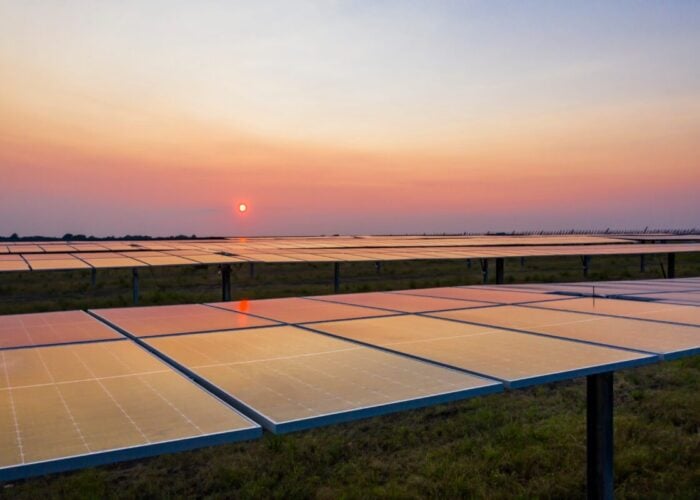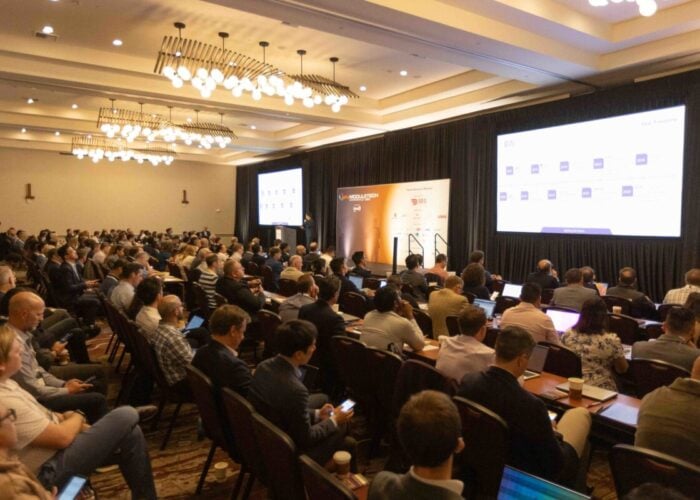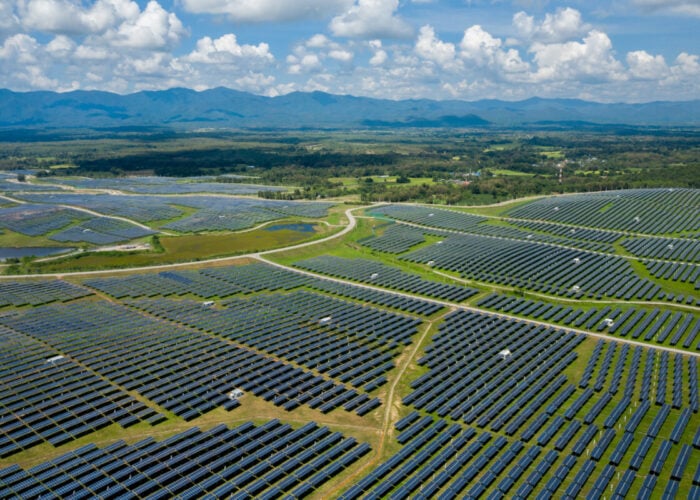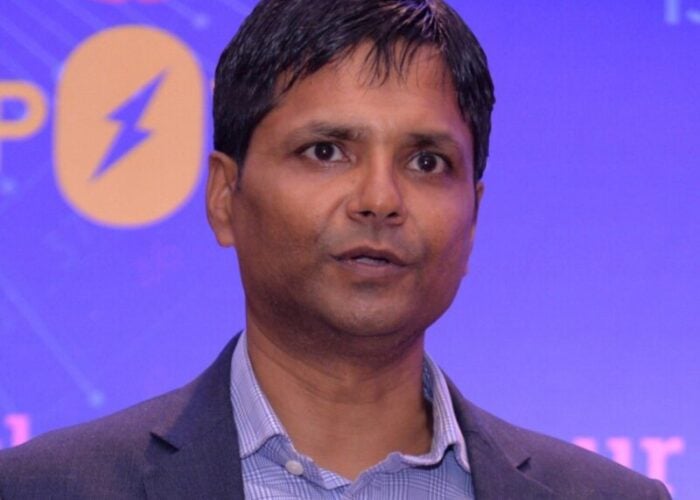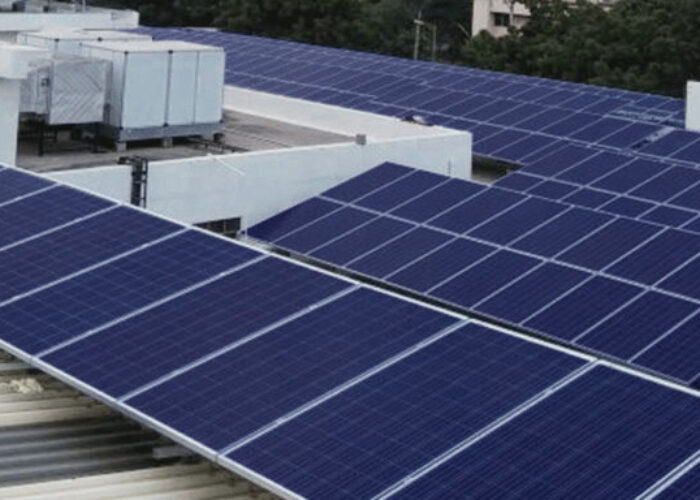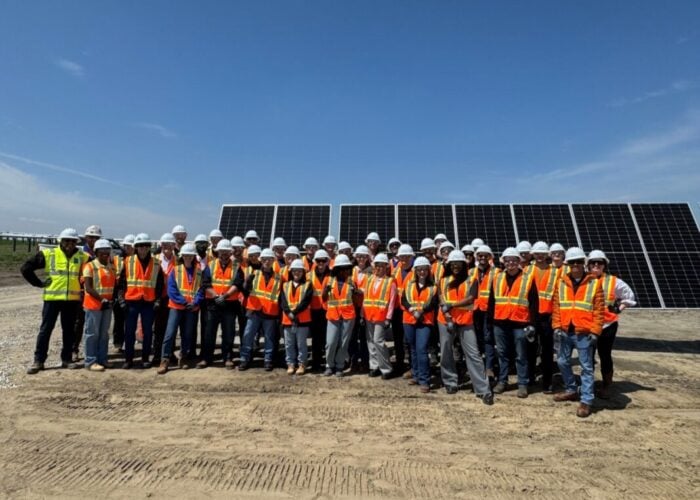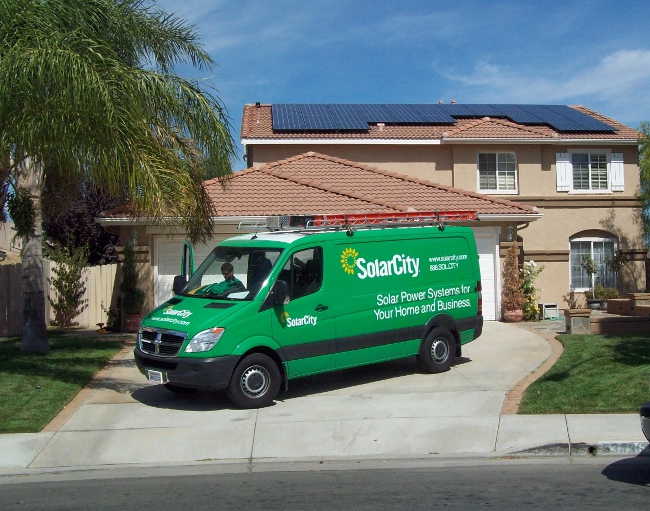
Over the past 12 months, the US solar business has been on a rollercoaster ride, with the high-profile bankruptcy of SunEdison and the merger of SolarCity and Tesla stealing the headlines. Danielle Ola talks to the experts about some of the key trends shaping the world of solar finance and investment in the US. This feature originally appeared in the eighth issue of PV Tech Power. To be emailed every issue of PV Tech Power first, and a host of other benefits, sign-up for a free PV Tech essential membership today.
Unlock unlimited access for 12 whole months of distinctive global analysis
Photovoltaics International is now included.
- Regular insight and analysis of the industry’s biggest developments
- In-depth interviews with the industry’s leading figures
- Unlimited digital access to the PV Tech Power journal catalogue
- Unlimited digital access to the Photovoltaics International journal catalogue
- Access to more than 1,000 technical papers
- Discounts on Solar Media’s portfolio of events, in-person and virtual
Or continue reading this article for free
Market consolidation
After several years of consolidation in US solar, particularly in the residential space, 2016 looks set to be the year that trend changes.
“This is the first year that we have reversed the trend of consolidation,” says Jigar Shah, founder of SunEdison and clean energy entrepreneur. “For the past five years the residential marketplace has been consolidating into five players, and this year that will reverse. The top five players will lose market share this year. So a lot of the smaller players who have been ‘slow and steady wins the race’ are continuing to grow at 20% a year. In the past this has not been rewarded because the top five were growing at 50% a year.”
This can be attributed to a decrease in appetite for rooftop solar panels, as evidenced by California’s rooftop solar applications, which were down over 20% year-over-year in May. As California is the single biggest solar market, it is a clear indicator of the future of rooftop demand. This is also further seen in SolarCity’s second quarter results and lowered full-year guidance. But the good news is that this opens up the market for a new type of competition; as smaller players may have a chance at a larger market share.
Key deals
Despite a less than stellar performance overall, some key transactions were seen this year. The biggest transaction so far was undoubtedly the all-stock US$2.6 billion Tesla-SolarCity deal, with Shah suggesting the opportunity for both brands to cross-sell products was a significant motivation.
“The two technologies in the clean energy space that have some sex appeal to them are solar and electric vehicles. So for all the people that are attracted by electric vehicles Tesla can now sell them solar, and for all the people that are attracted by solar, SolarCity can now sell them EVs. If you’ve got Tesla having 300,000 pre-orders for Model 3s, they can really substantially increase the sales of SolarCity. And vice versa. A lot of those people who bought SolarCity systems could go out and buy Teslas.”
Markets and market watchers responded less favourably than Shah, with share prices tumbling 4.14% and 1.92% for SolarCity and Tesla respectively since announcement of the deal. There is agreement among industry experts that the deal was driven more by internal dynamics than any other external force; the two companies are intertwined by family ties, as well as sharing many of the same investors. It is a good opportunity for the residential installer, which will now get access to Tesla’s fairly large balance sheet, better access to the public market and of course access to energy storage.
“It basically consolidates even further the vertical integration they had,” says Santosh Raikar, managing director, renewable energy investments at State Street Bank. “Batteries will play a much larger role in residential solar in the future and there are some integrated residential solar battery players that are being implemented in the market.”
The deal is arguably a better value proposition for SolarCity than Tesla, with some characterising the deal as more of a bailout than an acquisition, comparing it to the Total acquisition of then embattled SunPower. Regardless of a less than welcoming investor reception, it is evident that the deal propels both companies into a space not yet seen in the solar industry.
“It’s pretty atypical to everything else in the solar industry,” says Stacey Hughes, CEO at SunLight General Capital. “Tesla and SolarCity have done something really different which is to incorporate high-end consumer products. It probably does allow for a really sophisticated and well-funded R&D approach and positions them to do things differently than all the other energy market participants.” For example, the two companies are talking about a push to create rooftops with solar embedded.
A sign of things to come?
Despite its eye-catching nature, the general feeling is that the deal in isolation does little to signify the shape of US solar consolidation to come.
“I don’t believe that that is an indicator of a larger trend,” says David Giordano, managing director and member of the Renewable Power Group at Blackrock Alternative Investors. “I think there is a very specific synergy that exists between those two companies, and it was a fairly unique partnership that was able to facilitate that merger.”
What it does signify is that the solar market is a challenged space, with only so many investment dollars and only so many projects that work. Perhaps it is an indicator to those that wish to have a serious market share and scale that more internal diversification is needed to remain competitive. But Edmeé Kelsey, CEO of asset management specialist 3megawatt believes the Tesla-SolarCity deal is indicative of a specific trend of business models merging:
“We see three things: utilities, car companies and solar companies all trying to blend their business models. The significance of the SolarCity deal is just that you see these three types of companies all of sudden merging into a defining business model for the future.”
Indeed, Mercedes-Benz last year began offering its own brand lithium-ion batteries through German automaker Daimler AG. BMW recently entered the energy service business, and utilities also are now buying storage companies.
Yieldcos
Recent events do not paint the yieldco model in a positive light. Still contractually shackled to a bankrupt sponsor, SunEdison, both TerraForm Power and TerraForm Global depend on the developer for administrative and supportive services. Both yieldcos have delayed filing their second quarter 2016 results, the third successive quarter without financial filings from the pair. This can be attributed in part to the bankruptcy of their parent firm, as previous results were delayed due to “material weaknesses” identified by SunEdison management.
It would not be surprising if investors now tread with trepidation when it comes to the yieldco model. The general consensus is that in and of itself, the yieldco can be a very effective financing mechanism that allows retail investors to access mature and stable cash-flow asset classes. However, the challenge comes in broader market conditions that make it difficult to access that capital. Having a healthy pipeline of projects on the developer side to deliver projects to the yieldco is pivotal, and this is where SunEdison failed.
Most will agree that it is a challenge to raise new capital during periods of growth in the public markets, but opinion is divided on whether the SunEdison fiasco merely tainted the model, or whether it is inherently flawed.
“In theory it is a perfectly good financial model,” says Hughes. “The problem is if you isolate it to make investments in solar or even only in wind where there are not enough new projects to deliver the economies of scale. To the extent they are very general, project finance yieldcos can work fine. To the extent it is limited to solar, I think it is probably an unrealistic approach and I don’t think the yield that they are delivering is sufficient for either the risk they were taking or the capital they were putting up.”
Investor view
But what do the investors think? Some reckon that yieldcos draw most interest from institutional investors like hedge funds, which tend to be more opportunistic. Other investors, who are looking for a wider array of projects with higher yield, might not be as interested in yieldcos.
“Overall I think companies are trying to isolate the SunEdison incident as a one-off and look at yieldcos as something separate,” says Mercom Capital Group’s CEO, Raj Prabhu.
There are still a lot of yieldcos out there and there are a lot of investors that favour them. It can only be a good thing to have a quoted entity that holds solar assets, particularly in the US, where one has to be a credited investor in order to buy solar projects. So the yieldco model is essentially the only way that as a private investor you can invest directly into solar projects and that is very appealing.
Positives for yieldcos
It is a huge selling point that yieldcos are one of the only ways to gain access to a class of investment that was not available for small investors in the past. It still remains fairly difficult for your average mutual fund or individual investor to invest in a project finance deal – as this is usually the domain of large equity investors and commercial banks. “They give you a nice combination of growth and yield that is difficult to find elsewhere in the economy at this point in time,” says John Berger, CEO of Sunnova Solar Energy. “It is a long-term promising model that is viable and clearly I think is coming back.”
Indeed, the SunEdison yieldcos are much more valuable than what was thought by the market even a few weeks ago. In addition, some feel that they may be rebounding after the SunEdison hit. Two other yieldcos, NRG Yield and 8point3 Energy, are seeing some improvement in stock prices, which could be a signal of better days to come.
“I think yieldcos were in a bit of trouble last year, but they have rebounded nicely,” says Shah. “This is a big deal and a good thing, and gives people more licence for traditional innovation. In fact, I think the yieldco model has become stronger than ever. There were a lot of people questioning the yieldco market last year but I think with the rebound of 8point3 Energy and NextEra and some of these others, you are seeing a tremendous resurgence in the yieldco market right now.”
Secondary PV market
The secondary PV market – where solar assets are sold to new investors – has yet to get going properly in the US, as it has in Europe. This is largely due to investors making the most of tax equity benefits bestowed on PV projects under the federal investment tax credit. According to Shah, the fact that the secondary market has yet to kick off is the “biggest casualty” of the SunEdison yieldco debacle.
“The secondary market is still not liquid and that is because TerraForm Global and TerraForm Power were the main provider of liquidity to the first donors of solar PV. Now that they have exited the market, here has been very little interest on the part of other yieldcos.”
Sunnova’s Berger believes the secondary market is not only being held back by tax equity, but by a lack of companies that have sound balance sheets and are able to be sponsors to asset sales to financial and other players.
“The industry has to become profitable and reduce leverage, which are related, to proliferate,” he explains. “That is clearly taking place and as investors see those positive things, then I think that more participants and more competitors will show up and other investors will see that and want to invest. As they build asset bases, that will mean that there will be more participants that can trade secondary assets.”
Market drivers
To build real scale in the secondary market would take an outside force, for example, a meaningfully higher asset price, because most of the projects are already operating in an acceptable yield, and to sell them, the owner would have to either take a haircut on that or the buyer would purchase it at a much lower yield. In addition, one of the main barriers of the secondary market is the fact that there is no good due diligence methodology. Therefore, a real driver for this latent market will be standardisation.
“Once someone figures out how to due diligence these assets for 90% less cost, you will see a boom in these purchases,” Shah says.
Until that happens, the fundamentals of the power portfolio mix themselves will continue to create opportunities for new projects to get built, and as they get built there will be opportunities to sell them in the secondary market to investors who are seeking more mature assets and not just new builds.
“You also have adjustments where you have utilities enhancing the environment for new project development, as the demand is increased for end-users for access to renewable power,” adds Giordano. “That combined with an increase in demand will really drive growth.”
Companies can also engage in tactical or opportunistic strategies to ensure a place in the secondary market. For example, some projects may be financed with an intention to taking them public at some point – either through a yieldco or an IPO. Due to lack of access to capital market activity, such projects can be sold to an alternate investor with a view to releasing the capital so they can recirculate.
Market obstacles
It is apparent that cracking this market, in the current tax equity climate, is difficult. Another problem that may arise is the quality of early projects.
“The current owners of the solar projects, particularly in the US, are generally fairly unsophisticated,” says Shah. “Their paperwork etc. is not in order. Many of them have not been audited before and so it’s just very difficult to trust the numbers that they have.”
On an even more basic level, owning assets directly could be an initial challenge for investors. There are, after all, only so many projects already built, and there are depreciating assets. Notwithstanding a fragmented secondary PV market, Berger is assured that everything that is going on now is healthy for the industry:
“We were strongly cautioning that the industry was about to go to a capital market that was going to be rather difficult. We’ve obviously experienced that. I think the capital market is cleaning up and saying specifically, spend less money on overhead, don’t buy overpaid assets, basically have good returns and don’t over lever, and as that market discipline is in place in the industry, the assets themselves are performing very well. Right now, as opposed to say a year ago, the underlying fundamentals of the business, which is really what matters in the industry, are extremely strong. I think in the next year or so we’ll be in a very strong position, but that will be because the industry has bought financial discipline to play. It’s healthy, and it happens in every market.”
Solar Media is hosting the third Solar Finance & Investment USA conference in New York on 25-26 October 2016.

